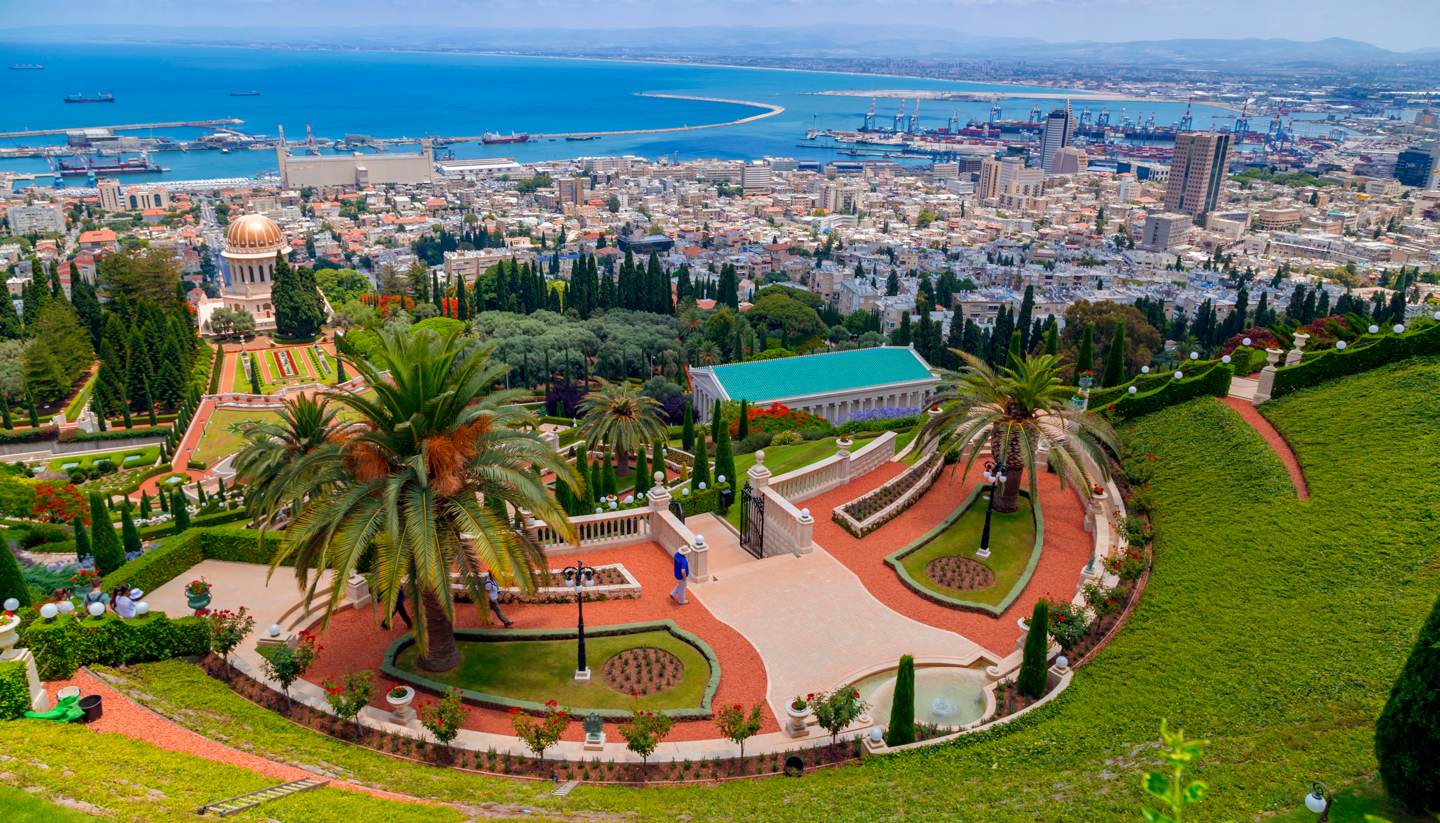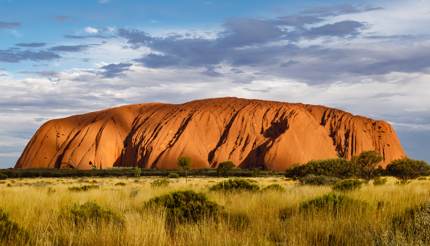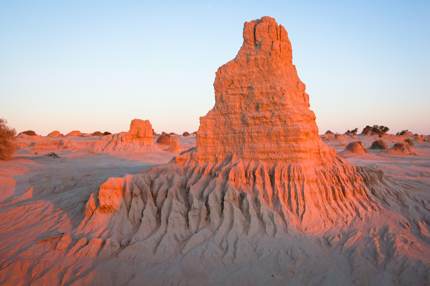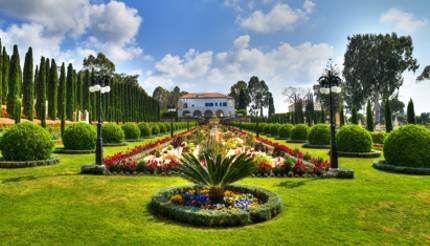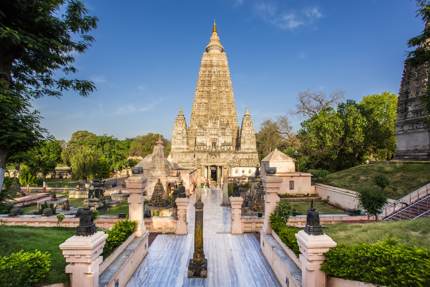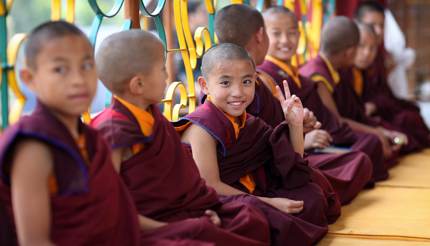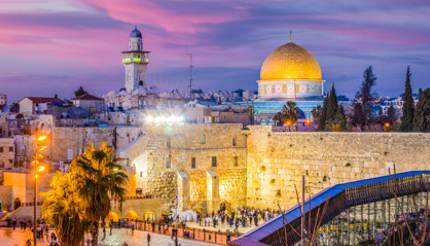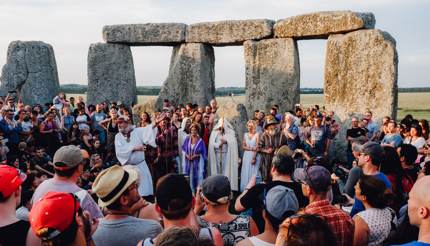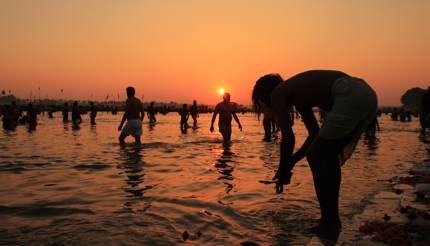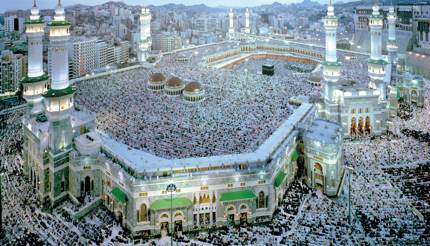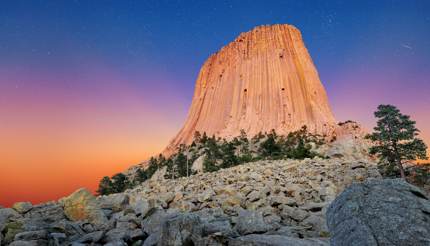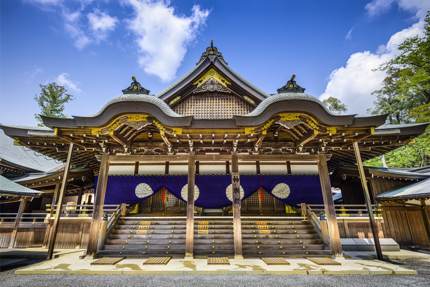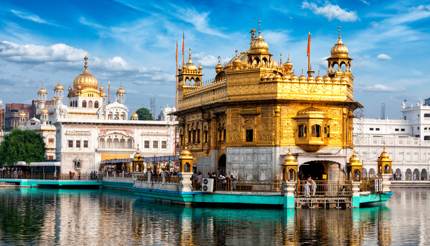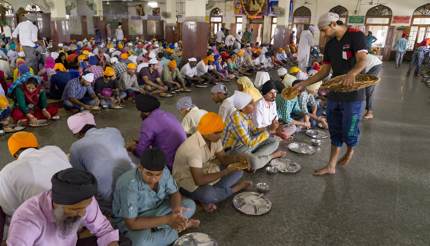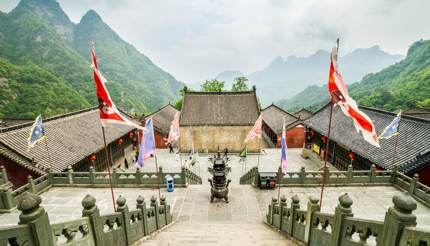From dry riverbeds to lush mountaintops, here is a selection of famous and lesser-known religious destinations
The sacred sites of Aboriginals: various, including the Willandra Lakes Region, Australia
For some 60,000 years, the Aboriginal people in Australia have been living on their ancestral lands, worshipping at various sacred sites and passing oral literature from one generation to another. Their beliefs, known as the ‘Dreamtime’ or the ‘Dreaming’, focus on spirits who are the source of everything – from high mountains to deep canyons, and from flowers that grace the meadows to animals that spring across the unspoilt Outback.
The Aboriginal people’s rich and unique cultures have inspired many tourists to visit their sacred sites and in some instances, causing overtourism. A case in point being the spectacular Uluru (Ayers Rock). Due to overtourism and safety concerns, from October 26, 2019 onwards, tourists can no longer climb up this massive monolith rising up from the surrounding scrubland in the Northern Territory.
Another location in Australia that holds tremendous significance for the indigenous peoples of Australia is the Willandra Lakes Region in south-western New South Wales. The landscapes here are otherworldly – a chain of ancient dry lakebeds form a myriad of depressions over 2,400 km² (927 mi²) – covering the areas of New York and Los Angeles combined. It was here that in 1968, Jim Bowler, a geologist, discovered the bones of a human living some 26,000 years ago. This discovery led to a series of other discoveries, including the remains of a 40,000-year-old female (known as Mungo Lady) found in the dunes of Lake Mungo, which is believed to be the oldest ritual cremation site on the planet.
The Willandra Lakes remains as the traditional meeting place of several Aboriginal tribes, including the Barkinji, the Muthi Muthi and the Nyiampaar. Many members of these groups continue to help care and manage this special and ancient place. If you plan to visit, remember to respect the lands and leave no trace.
The sacred site of Bahá’is: Acre and Haifa, Israel
Established by Bahá’u’lláh in 1863 in Persia (now Iran), the Bahá’i faith respects and accepts all religions as having true origins and believes that humanity should work together in unity. The holy site of the Bahá’is is the burial site of Bahá’u’lláh known as the Shrine of Bahá’u’lláh in Acre (now in Israel), where he passed away while in exile.
About 30km (19 miles) south of the Shrine of Bahá’u’lláh is the Shrine of the Báb’, the second holy place of the Bahá’i faith. In 2008, both shrines were added to the UNESCO World Heritage List.
The sacred site of Buddhists: Bodh Gaya, India
It is said that Buddha attained enlightenment while meditating under a Bodhi tree in Bodh Gaya, about 473km (294 miles) northwest of Kolkata. As such, the Mahabodhi Temple was built to mark this site of great significance and as a result, Buddhists from around the world come here to pay homage and meditate. The wider town is also full of monasteries set-up by devotees from 52 countries and it is common to see both monks and pilgrims of many nationalities sit side-by-side, often in deep contemplation.
On July 7, 2013, nine low-intensity bombs exploded in and around the temple complex. While the bombs did not damage the main temple structure and the Bodhi Tree, they did set back the restoration work at the main building. Following the incident, devotees in Thailand, including the King of Thailand, donated (300 kilos) 660lbs of gold to create a new shimmering inlaid temple dome.
Bodh Gaya is most visited during celebrations of Buddha Jayanti (Buddha’s birthday). The exact date of the birthday is based on the lunisolar calendar, so it varies from year to year in the western calendar – although it usually falls in April or May.
The sacred site of Christians, Jews and Muslims: Jerusalem, Israel
Jerusalem has served (and continues to serve) as a key place of pilgrimage for three Abrahamic faiths: Christianity, Judaism and Islam. Within the old walled city, crammed with small alleyways and bazaars, holy sites of the three faiths stand within a few hundred metres of one another and the air here is thick with reverence for the supreme being. Once you’ve experienced this magical city, even if you aren’t religious, you’re likely to describe your journey as incredible and something along the line of, “I came as a tourist, but left a pilgrim.”
For people of the Christian faith, Jerusalem is an important location in the Old Testament and in the life, death and resurrection of Jesus, with the key site being the Church of the Holy Sepulchre where Jesus was resurrected.
For people of the Jewish faith, the city which is known as ‘Yerushalayim’ in Hebrew, became their spiritual home when King Solomon built the First Temple in 957 BCE.
For people of the Muslim faith, the magnificent Dome of the Rock on the Temple Mount is a sacred shrine because Prophet Muhammad travelled from Mecca to pray and ascend to heaven from here.
The sacred site of Christians and Catholics: various, including Santiago de Compostela, Spain
Christians and Catholics have been walking along the Camino de Santiago (aka The Way of Saint James) for over a thousand years. This ancient network of routes has several starting points but all leads to the Santiago de Compostela in northwest Spain, the alleged resting place of the apostle St James.
Modern pilgrims tend to take the ‘French Way’ by starting from St Jean Pied de Port in southern France. They usually travel alone, on foot and carry only the bare necessities. At night, they sleep in one of the family-run hostels along the route. On average, the journey from St Jean Pied de Port to Santiago de Compostela takes about four weeks.
The sacred site of Druids: Stonehenge, England
Known all around the world, the strange formation of Stonehenge fuels the imagination of many. Was it built by aliens as an energy portal or was it a result of a team-building exercise gone awry by our distant Neolithic cousins? While nobody seems to know exactly what happened all those thousands of years ago to prompt the creation of Stonehenge, experts tend to agree that building began some 5,000 years ago and continued for centuries.
Today, Stonehenge is a tourist hotspot year-round and is also a Druid’s prayer spot twice a year – on the summer and winter solstices. Modern Druids are made up of loosely organised groups with differing beliefs, although most share a deep passion for nature and cosmic spirituality. The rituals of Druidism often involve praying and meditating in silence, as well as singing in groups. Some Druids also bring a symbolic item and cast it to the ground – the action is said to free oneself from things that have been holding one back.
The sacred sites of Hindus: Prayagraj, Haridwar, Nashik, and Ujjain, India
Described by UNESCO as the largest peaceful gathering of pilgrims on earth, Kumbh Mela is a mass Hindu festival that is celebrated four times and in four different locations over the course of 12 years. The event takes its name from a legendary story whereby a kumbh (pot) of nectar (a source of immortality) was fought over by gods and demons. During the battle, a few drops of the nectar spilled at the four locations, namely Prayagraj (aka Prayag or Allahabad), Haridwar, Nashik, and Ujjain. As such, pilgrims descend upon one of the four locations’ sacred rivers every three years to bath in the water, sing songs of devotion, attend yagna (a fire ritual) and religious talks over a period of 45 to 48 days.
While the exact dates of the celebration are determined by the positions of the sun, the moon and Jupiter, the festival always begins at sunrise, with holy men smeared on tilaka (sandalwood paste) and leading pilgrims for a dip in the river. The bathing ritual is said to purify the soul and wash away all sins, thereby liberating one from the circle of death and rebirth.
Once in every 144 years, a major Kumbh Mela is also held in Prayagraj, the sacred meeting point of the Ganges, Yamuna and mythical Saraswati rivers. The last such gathering was held in 2010 and it drew some 60-80 pilgrims from India and around the world.
The sacred site of Muslims: Mecca, Saudi Arabia
As the birthplace of the Prophet Muhammad and the centre of Islam, Mecca is considered the most sacred place to Muslims. At least once in their lifetime, every physically and financially-able Muslim must perform Hajj, a pilgrimage to Kaaba, the cube-shaped “House of Allah” located in the centre of the Great Mosque of Mecca.
The rituals involve spending a day at Arafat, holding a vigil at Muzdalifah (where they must collect pebbles for the next ritual), throwing pebbles at the pillars in Mina (a symbolic act of stoning of the devil), making a sacrifice, trimming or shaving (men only) their hair, and then walking counter-clockwise seven times around the Kaaba, as well as walking between the hills of Safa and Marwa seven times. After that, the pilgrims celebrate the three-day festival of Eid al-Adha.
The sacred sites of Native Americans: various, including Devils Tower, Wyoming
It is thought that the first Americans ventured to the territory of North America some 15,000 years ago when the ice sheets between the New World and Beringian retreated. Then over millennia, they evolved into some 750 different tribes living anywhere from the high deserts to open prairies across the continent. While each tribe has its own language and culture, collectively they believe in the ever-present spirits in the natural world and perform a series of rituals like the Sun Dance and the Snake Dance at various sacred sites.
One of the many sites sacred to quite a few Native Americans tribes is Devils Tower in Wyoming, a huge rock formation towering above the left bank of Belle Fourche River. Devils Tower was also the very first official National Monument in the USA, established by President Theodore Roosevelt on September 24, 1906, following the Antiquities Act. And if you are a fan of science fiction, this was where the alien mothership landed in the iconic movie Close Encounters of the Third Kind by Steven Spielberg in 1977.
The sacred site of Shinto: Ise, Japan
Shinto (“the way of the gods”) is faith that has no founding fathers or sacred scriptures. However, it does have four affirmations centred on ethical principles that have woven into the Japanese culture for centuries. The affirmations are:
- Family and tradition
- Love of nature
- Purity ritual
- Matsuri (honouring gods and ancestral spirits)
The Ise Grand Shrine in the Mie Prefecture is one of the holiest sites in the Shinto religion and it is here that the emperor of Japan will visit and pay homage. While technically Ise Grand Shrine refers to a collection of some 100 wooden shrines in the area, most people associate the term with two of its most important shrines – Naikū and Gekū. Naikū is dedicated to Amaterasu Omikami (the Sun Goddess), who is also the mythical ancestress of the Japanese imperial family. Gekū, on the other hand, is devoted to Toyuke Ōkami, the god of food, clothing and housing.
Before entering any of the shrines, head to the large rock basin where you must first perform temizuya (the cleaning ritual) by washing your hands and rinsing your mouth. Then you bow in front of the gate, enter, bow twice before the alter, lightly clap your hands twice, then put your hands together and pray silently. To finish, take another bow and leave silently.
While Shinto promotes peace and nature, it is not without controversy. The Yasukuni Shrine in Tokyo, for instance, is dedicated to Japan’s war dead, including convicted Class A war criminals responsible for mass killings in World War II.
The sacred site of Sikhs: Amritsar, India
It is impossible to miss the astonishingly beautiful Harmandir Sahib, aka The Golden Temple, in Amritsar within the state of Punjab. This building is the most sacred place for adherents of the Sikh religion and the primary Gurudwara (a place of worship for Sikhs). Accordingly, every Sikh follower wants to visit here at least once in their lifetime to pray and worship.
It is also impossible to miss the legendary langar (free kitchen) where 100,000 people a day (more on weekends), regardless of caste, creed and religion, all sit on the floor and enjoy a hot vegetarian meal together, free of charge. Run by 450 staff and an army of volunteers who chop, cook, and wash up behind the scene, the dining hall is open 24×7, and it goes through an average of 7,000kg of wheat flour, 1,200kg of rice, 1,300kg of lentils, 500kg of clarified butter a day to feed a constant stream of people – quite an achievement, really.
The sacred site of Taoists: Wudang Mountains, Hubei Province, China
Regarded as one of the sacred mountains of Taoism or Daoism, the majestic Wudang Mountains have welcomed millions of pilgrims and visitors for millennia. Nestled among the misty peaks is a cluster of ancient Taoist temples – the surviving 53 buildings and nine architectural sites – where Taoists have long been coming here to meditate and learn the cosmic force that flows through all things with an aim to achieve ‘taihe’ (the great harmony).
Wudang is also deeply associated with two well-known Chinese martial arts – Tai Chi and Wudang Quan.
Tai Chi is said to be created by Taoist Zhang Sanfeng sometime in the 1280s when he was living at the foot of Wudang Mountains. The purpose of Tai Chi is to use the forces of yin and yan to balance and strengthen one’s inner core. Much like Tai Chi, Wudang Quan is also to promote fitness, though there is a variation in which it becomes a fighting art for self-defence with an emphasis on using soft movements to defeat hard attacks.
Today, it is not uncommon to see students of Tai Chi and Wudang Quan from around the world making trips to the mountains and practising the moves with the locals. It is quite a privilege to witness one of the sessions or even join in; you may soon feel a sense of peace and fulfilment, maybe even with a surge of positive energy flowing within you… and that is what we think pilgrimage is all about.
If you like this article, you might also like:
